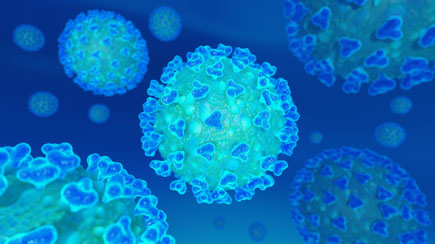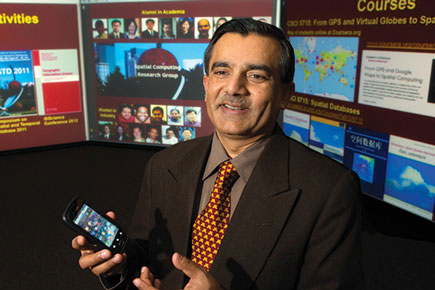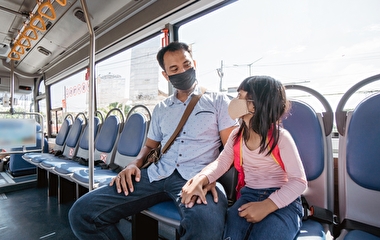What if your phone knew you had been exposed to COVID-19 before you did? According to computer science and engineering professor Shashi Shekhar, data collected by the cellular devices we keep in our pockets could be a key weapon in the fight against the novel coronavirus.
Shekhar and his team analyze large sets of spatial data, defined as any data that has a location attached. Common examples include the United States census, daily satellite imagery, and location data from GPS-equipped devices such as vehicles and smartphones.
In the past, Shekhar has studied GPS trajectories for various transportation industries. Now, he says researchers can use location data from smartphones to not only track and control the spread of COVID-19, but also to evaluate how effective government responses to the disease have been.
For years, health workers have been tracking and containing the spread of diseases through a method called contact tracing. When patients test positive for a disease, health professionals interview them to find out who they have been in close contact with and where they could have spread the disease. While hospitals have been conducting this process manually for COVID-19 patients, Shekhar said using mobile location data would speed up the process significantly.
“COVID-19 is so fast-breaking and so large, you can see that it is overwhelming the manual contact tracing system,” he explains. “That’s why today we need to help the contact tracing professionals with new tools, and one of those tools is smartphone trajectories.”
Shekhar proposes a system in which medical records and spatial data work together. After compiling a dataset of patients who have tested positive for COVID-19, researchers could cross-check that data with smartphones that were near that person during the infected period. Then, public health organizations could contact those who may have been infected.
Countries like Israel and Singapore have already made use of this mobile contact tracing, sending texts to citizens alerting them of potential COVID-19 exposure. This would be harder to achieve in the United States, since current privacy norms impede the release of such specific data. However, considering the threat the novel coronavirus poses, Shekhar believes the US government should make an emergency exception and harness this data for good.
“COVID-19 is probably the biggest national emergency in almost 100 years, and during these times we need to think a little differently,” he says.
Contact tracing just scratches the surface of the insights spatial data can provide related to COVID-19, according to Shekhar. For example, researchers have begun using smartphone data to study the impact of both statewide and nationwide measures such as social distancing and shelter-in-place orders. By using mobile data to compute average “daily range” over time—in other words, how far people are traveling from their homes—researchers can determine how effective shelter-in-place orders have been in reducing movement.
Shekhar is currently using anonymous aggregated smartphone data to analyze average daily distance traveled in the Twin Cities metro area and throughout Minnesota beginning in early March. Preliminary results show that people’s daily range decreased through March and early April, but then began to bounce back from April 17 to 30.
This kind of information can be used to inform public policy and also to create improved COVID-19 transmission dynamics models, which policymakers can use to estimate the number of infections and deaths.
Shekhar also says there are numerous other ways science and engineering fields like spatial computing can help, and he encourages his fellow researchers to think about how their work can contribute. “I think people, in our college and others, need to take a look and see that many ideas they already have can make things better,” he says. “In this COVID-19 crisis, if science and engineering can help society, we need to do it.”
(Adapted from an article by Olivia Hultgren published on the U’s College of Science and Engineering website on April 10, 2020.)




